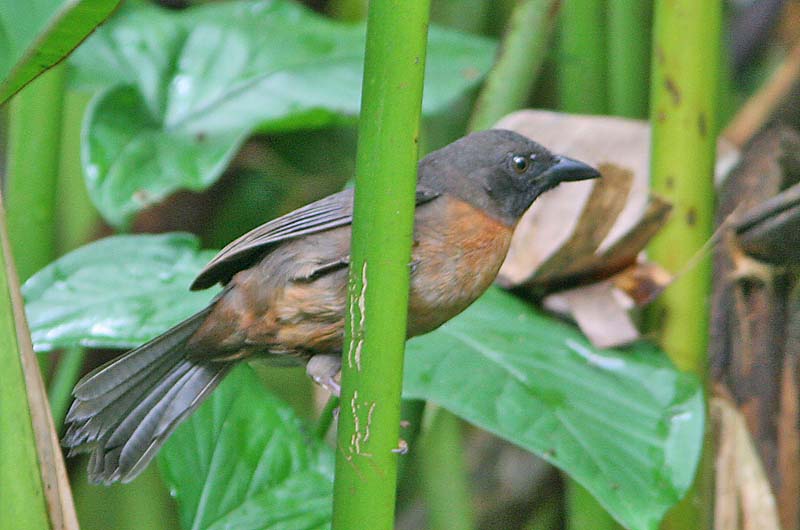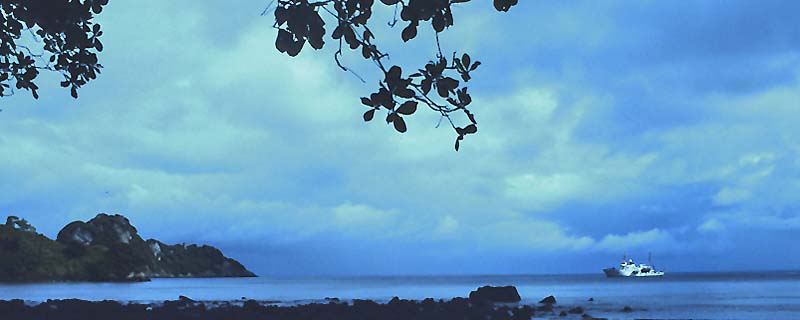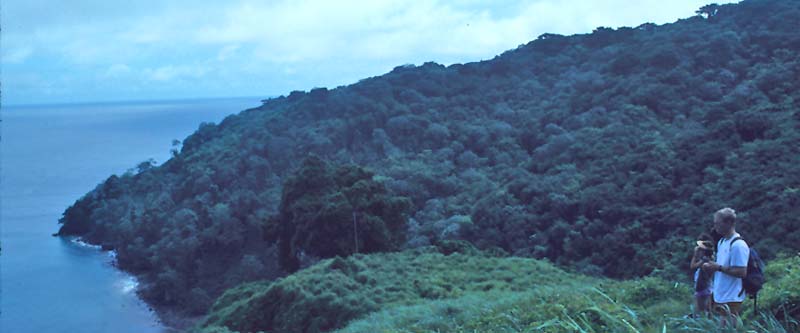| |
Over
850 bird species have been recorded in Costa Rica, but only six are
endemic — found there and no where else. Three occur on 'mainland'
Costa Rica and three only on Cocos Island, some 300 miles to the
southwest in the Pacific Ocean.
I am
interested in endemism, and have emphasized trying to see endemics. On
the mainland, one endemic is limited to middle elevations in the
northern spine of mountains (habitat at Braulio Carrillo NP, right).
This is Coppery-headed Emerald Elvira cupreiceps,
and easily seen at feeders at sites like Monteverde or Mirador
Cinchona. The photos below are from the latter site on 19 Dec 2007, and
picture two different males (top row is the same male in differing
light angles) and a female. |
|
|
|
|
|
|
|
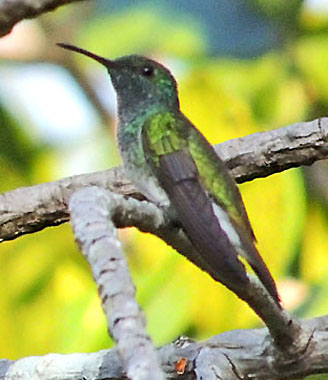 The
second endemic is also a hummingbird. It is confined to the narrow
strip of mangroves along the central and southern Pacific coast of
Costa Rica. It is Mangrove Hummingbird Amazilia boucardi.
It is listed as Endangered by Birdlife International because of its
small range, and continued habitat loss and degradation. We searched
for it along Rio Rincon on the Osa Peninsula, just a short distance
upstream from the mangroves at the Rincon delta, but the hummingbird
located by our guide, and that was photographed, was not this species
[It was Scaly-breasted Humingbird Phaeochroa cuvierii]. Richard Garrigues, author of the Birds of Costa Rica field guide, graciously provided photos of a male Mangrove Hummingbird (right and below). The
second endemic is also a hummingbird. It is confined to the narrow
strip of mangroves along the central and southern Pacific coast of
Costa Rica. It is Mangrove Hummingbird Amazilia boucardi.
It is listed as Endangered by Birdlife International because of its
small range, and continued habitat loss and degradation. We searched
for it along Rio Rincon on the Osa Peninsula, just a short distance
upstream from the mangroves at the Rincon delta, but the hummingbird
located by our guide, and that was photographed, was not this species
[It was Scaly-breasted Humingbird Phaeochroa cuvierii]. Richard Garrigues, author of the Birds of Costa Rica field guide, graciously provided photos of a male Mangrove Hummingbird (right and below).
It
should be mentioned that although there are only 6 endemics to Costa
Rica, and only 3 on the mainland, some 83 additional birds are
'near-endemics,' that is, found only in Costa Rica and barely into
another country. Southern Costa Rica shares 48 of these with adjacent
western Panama only. |
|
|
|
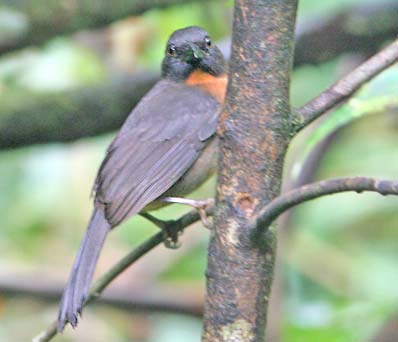 |
The final mainland endemic is restricted entirely to rain forest on the Osa Peninsula (above, from the air). Black-cheeked Ant-Tanager Habia atrimaxillaris
(left and below) is a skulker in the jungle undergrowth. Pairs and
small parties are noisy, though, and after a little practice they are
not that difficult to find in places where they are common. Some
actually come into feeders at Bosque del Rio Tigre and eat bananas.
These shots are from the forest behind Rio Tigre on 25 Dec 2007.
This species is also listed as Endangered by Birdlife International, with habitat loss the greatest single threat.
|
|
|
| |
|
Three
birds are endemic to Cocos Island, 300 miles souhwest of Costa Rica in the
Pacific Ocean, and about halfway to the Galapagos Islands. Cocos is a
only 16 square miles (24 sq km) and is now a national park. There are
no permanent human inhabitants – indeed, it was the model for the
mythical "Costa Rican island" on which Jurassic Park was built in the
novel by Michael Crichton, and subsequent movie.
The three birds are Cocos Cuckoo Coccyzus ferrugineus, Cocos Flycatcher Nesotriccus ridgwayi, and Cocos Finch Pinaroloxias inornata (right). As a seabird observer aboard the NOAA ship McArthur
(above), I had the chance to land on Cocos on 1 Nov 1989; these photos
were taken then. I saw the flycatcher and finch, and heard the cuckoo.
The male Cocos Finch is black; females are brown and streaky. One
female was building a nest. In many ways Cocos Finch recalls Galapagos
finches, and it is sometimes termed "the 14th Galapagos finch." |
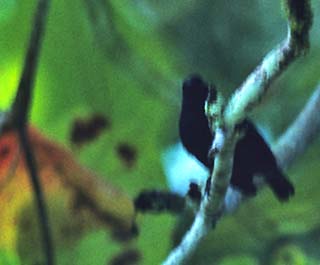 |
|
|
| |
|
|
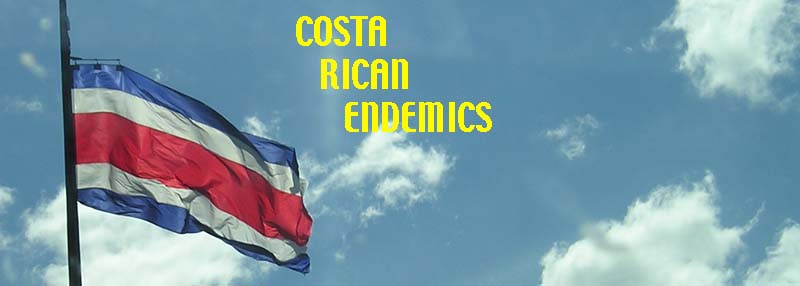

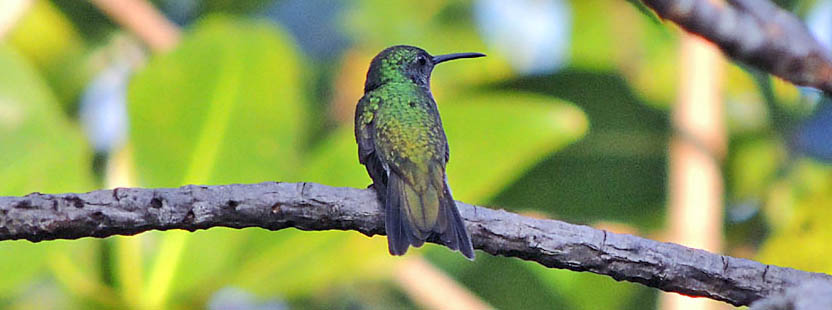
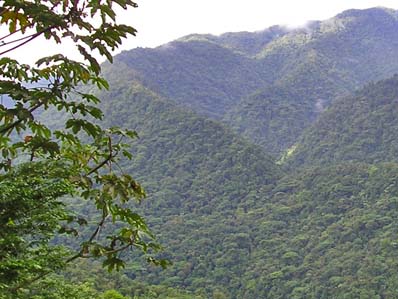
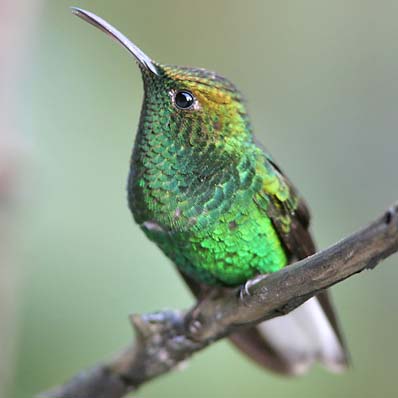

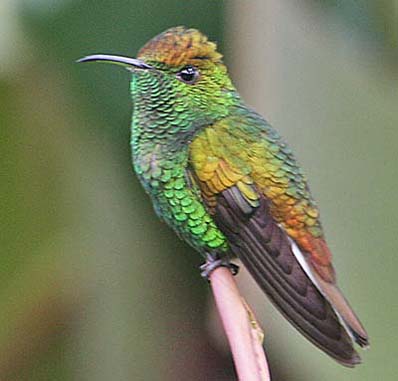
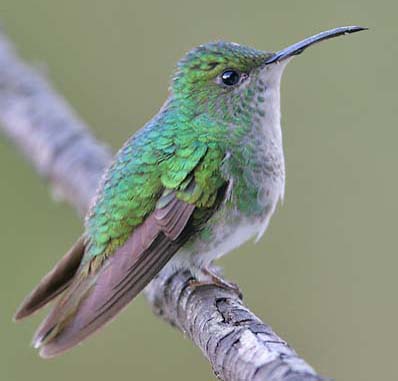
 The
second endemic is also a hummingbird. It is confined to the narrow
strip of mangroves along the central and southern Pacific coast of
Costa Rica. It is Mangrove Hummingbird Amazilia boucardi.
It is listed as Endangered by Birdlife International because of its
small range, and continued habitat loss and degradation. We searched
for it along Rio Rincon on the Osa Peninsula, just a short distance
upstream from the mangroves at the Rincon delta, but the hummingbird
located by our guide, and that was photographed, was not this species
[It was Scaly-breasted Humingbird Phaeochroa cuvierii]. Richard Garrigues, author of the Birds of Costa Rica field guide, graciously provided photos of a male Mangrove Hummingbird (right and below).
The
second endemic is also a hummingbird. It is confined to the narrow
strip of mangroves along the central and southern Pacific coast of
Costa Rica. It is Mangrove Hummingbird Amazilia boucardi.
It is listed as Endangered by Birdlife International because of its
small range, and continued habitat loss and degradation. We searched
for it along Rio Rincon on the Osa Peninsula, just a short distance
upstream from the mangroves at the Rincon delta, but the hummingbird
located by our guide, and that was photographed, was not this species
[It was Scaly-breasted Humingbird Phaeochroa cuvierii]. Richard Garrigues, author of the Birds of Costa Rica field guide, graciously provided photos of a male Mangrove Hummingbird (right and below).

